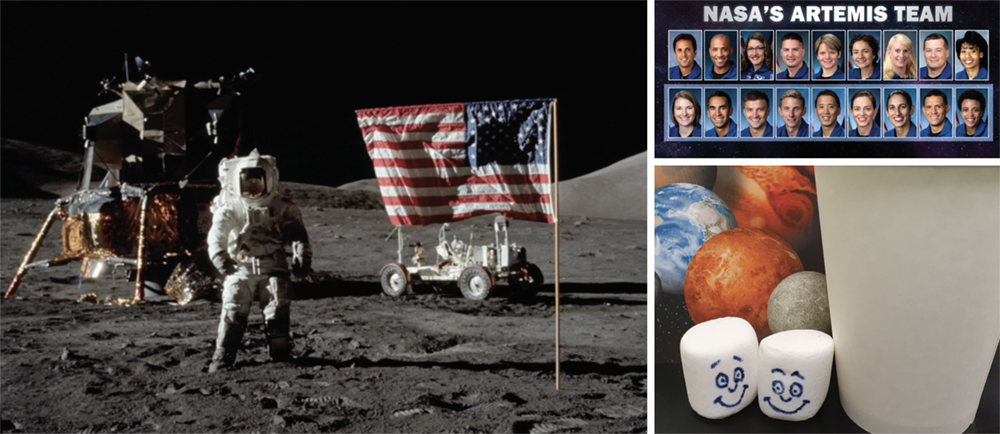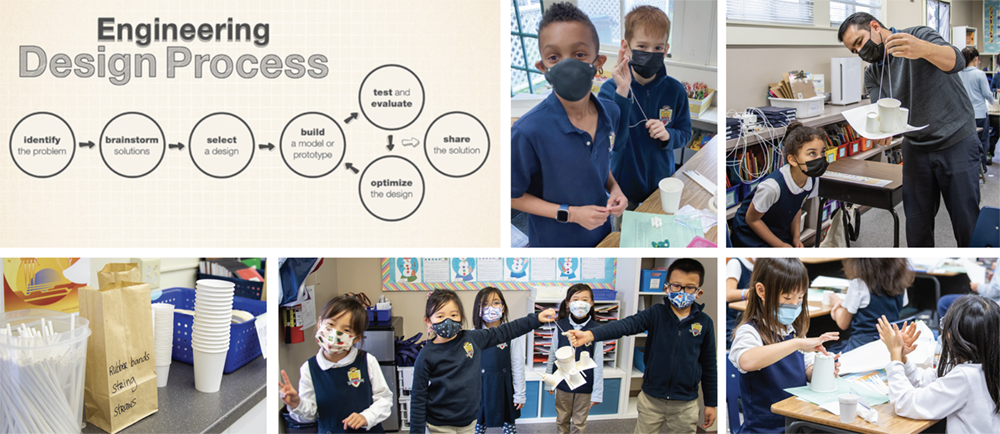What’s the fastest you have gone? Seventy miles per hour on the freeway? Five hundred miles per hour on a plane? For spacecraft heading to Mars, the speed can go up to 13,000 miles per hour. It can even go as fast as 24,000 miles per hour for a spacecraft heading to the moon! Soon, the United States is going to send astronauts to land on the moon for the first time in fifty years. The program is called Artemis. In Greek mythology, Artemis is the twin sister of Apollo, which was the name of our first crewed missions to the moon. The astronauts on the Artemis missions will have to slow way down in order to land safely on the surface to protect themselves and their spacecraft!

For this year’s Engineering Design Challenge, students from first through eighth grade were challenged to turn on their engineering minds to design and build a shock-absorbing system to protect two astronauts when they land. Of course, it would be tricky to build life-size spacecraft, so they used marshmallow astronauts. Just like the engineers who develop solutions to design different landing vehicles, our Cougars followed the same engineering design process to brainstorm, design, build, improve and test for this design challenge.
When building the landers, students were provided with a paper cup to use as the spacecraft and two marshmallow astronauts who had to stay in the cup when the lander was dropped. The rules were: you can’t strap the marshmallows down, nothing else was allowed inside the cup, and no covering of the cup. Our Cougars needed to think about gravity, stability, and shock-absorbing materials. How can you make sure the landers don’t tip over during landing? What kind of shock absorber can you make to soften the landing?

This Tuesday was day one when students designed and built their first attempt and tested during class. On Wednesday, we had a visit from engineer Juan Gutierrez, who spoke to the students about his inspiration to become an engineer and the projects he has worked on over the course of his career. Mr. Gutierrez encouraged the students to work on learning more than one language, including the language of math, programming and engineering, and to find opportunities to learn to lead and communicate with groups of people. As the students built their final marshmallow landers, Mr. Gutierrez visited the classrooms and gave advice about stabilizing the spacecraft, adding springs and other shock absorbers, and reducing mass to reduce force. Students then took the input and designed and built their final attempt. On Thursday, final builds were formally tested to identity the top three builds from each grade level. Friday is our last day, and students with top-scoring builds will participate in the final!

Special thank you to our Middle School science teacher Ms. Vinnedge for leading the Engineering Week! Our Clairbourn students were able to use their creativity and come up with many unique designs. They asked many questions, worked as a team and cheered for other teams. What a great week for our Cougars to demonstrate their SCHOLARSHIP and LEADERSHIP qualities with HEART!

